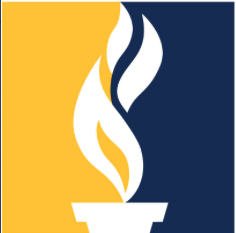Institution
Requirement
Status
Approved
Date Reviewed
Covers the mathematics elementary teachers are responsible for teaching at K-8 levels, including computing with whole numbers, fractions, decimals and percents; multiplicative comparisons and reasoning; ratio, rates, and proportions; negative numbers; algebra and graphing; relationships between time, distance and rate; patterns and functions. Some mathematical topics require more interaction among students than others. Some can arguably be learned on one’s own. Mathematics is not just getting answers to applications, but the heart of mathematics is investigation. The exploration of mathematical concepts should be done numerically, symbolically and graphically. (The Harvard Rule of Three). The attitudes, discussion and sharing involved in learning to teach mathematics are not learned on one’s own, so attendance is a very important part of this course. The learning environment in which the topics are presented is as important to the teacher as the topic being presented in most instances. Therefore, attendance and participation in class are very important parts of the course. Practice and the time required to discover processes are necessary to succeed in learning Math. Therefore, homework is required of everyone. Math has been characterized as the science of making errors. Without analyzing errors, we cannot see the correct ways of doing math and solving problems. Therefore, correcting mistakes in the homework is required of everyone. Questions are one of the best ways we obtain feedback on the status of our communication and understanding. Questions are encouraged at all times and students will be asked to work at the board at times. All work on the board will be discussed in spirit of cooperation and helpfulness. The external entities overseeing the teaching of Mathematics are arguably some of the most demanding (yet helpful) bodies available to any discipline. The National Council on Teachers of Mathematics (NCTM) continues to be the governing body for guidelines pertinent to the teaching of mathematics in the elementary and secondary grades. Their publications and standards will be provided to students in the class. The Transition Math Project (TMP) of Washington State will continue to affect the primary grades, as it delineates the needs of students graduating high school and progressing into college. The status and progress of the TMP will also be shared with the class. The importance of learning style has been disregarded in the teaching of math for years. The myth that there is only one way to do problems correctly has been pervasive in the math education community. We will dispel that myth and be open to multiple methods and processes that will allow all students to have access to success. This is the real substance of this course
Course Objectives
GENERAL COURSE OBJECTIVES: At the end of the course the student will be able to demonstrate: 1. A basic understanding of numbers and theories, including fractions, decimals and percents. 2. Knowledge of ratios, rates and proportions. 3. The theory related to negative numbers. 4. Basic algebraic function and graphing skills. 5. Critical thought with regard to time, distance, rate and patterns in the form of applied problems.
Tentative Schedule
Students will read lectures weekly and complete corresponding assignments. Assignments will be collected weekly. Your assignments should be created in an electronic (word processing format) document or scanned into PDF or JPG formats and then submitted on Canvas. No other modes of submission will be
acceptable.A discussion topic will be announced every 2 - 3 weeks. There will be two exams given at the end of week 6 and the end of week 10. A final exam will be given week 11. This is an 11 week course that begins on April 7, 2014 and ends on June 20, 2014.
Course Requirements
You should possess and be familiar with the use of a scientific calculator. Any brand or model will be acceptable, but it must have "scientific calculator" in the description. The only recommendation I have is the TI-30 XSII. You must have your textbook purchased on the 1st day of class as homework will be assigned on the first day.
